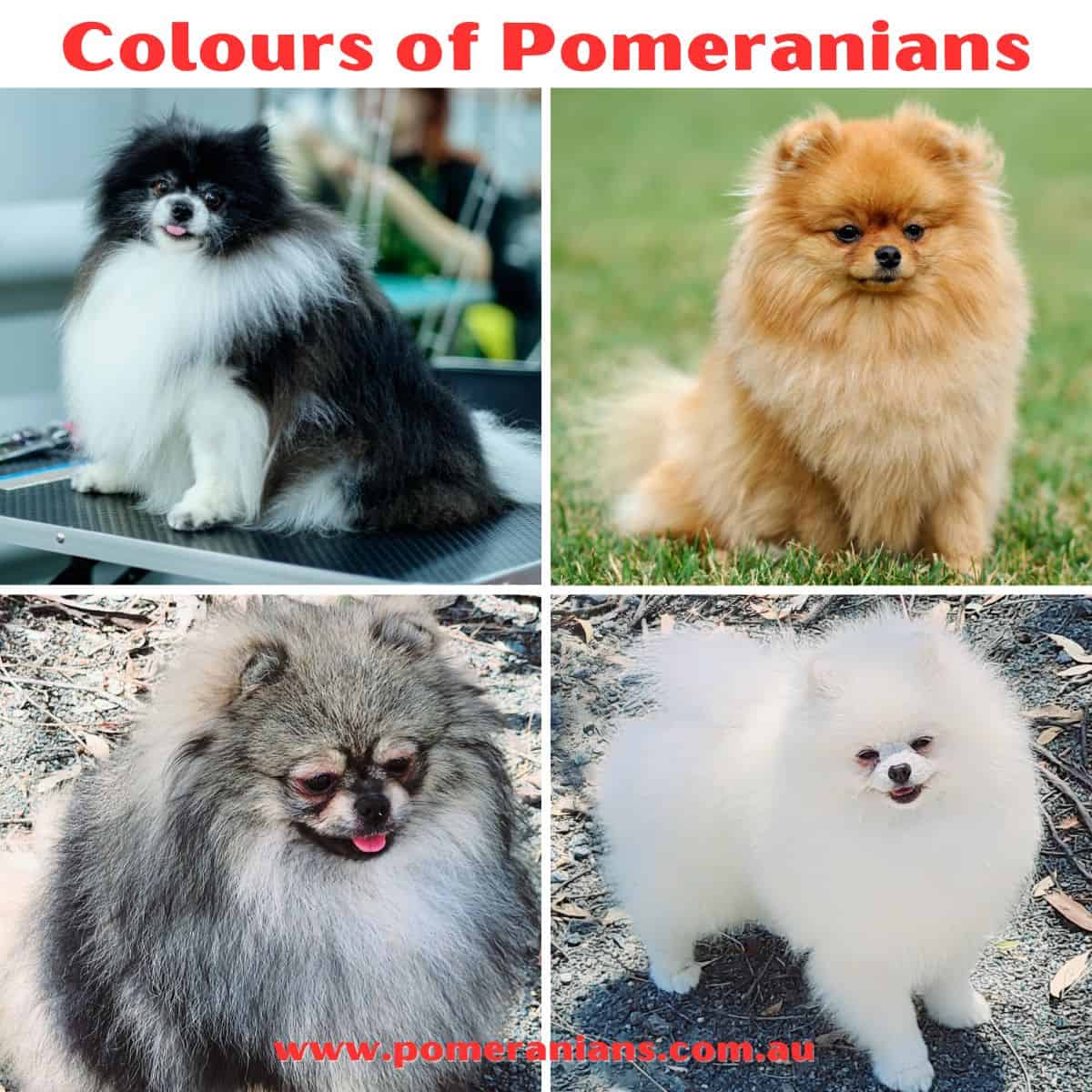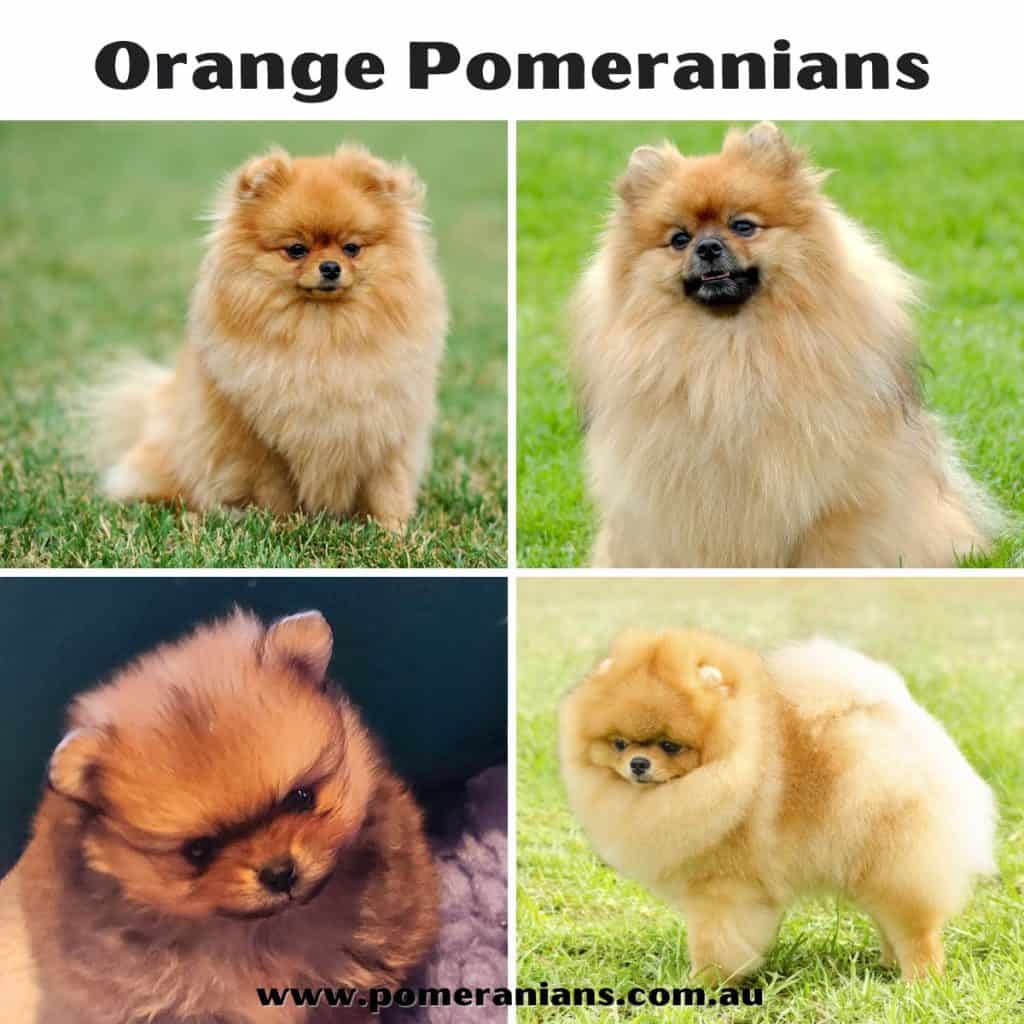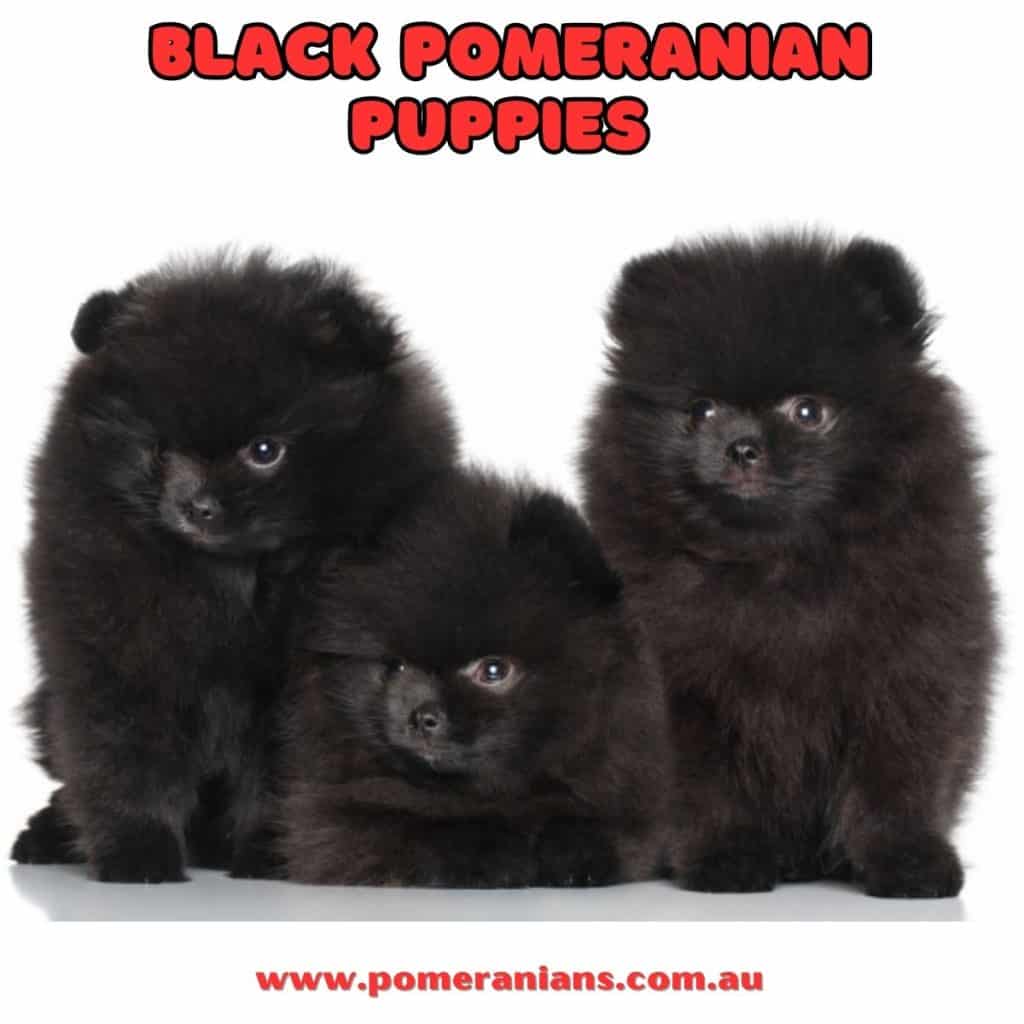Last Updated on April 17, 2024 by Denise Leo
Find out about the unique colours of Pomeranians in Australia. Welcome to the wonderful world of Australian Pomeranians – where no two look exactly alike despite their common heritage. We’ll take you through the fantastic colours found in this beloved fluff ball breed down under.
Are you considering getting a Pomeranian? Are you already the proud owner of one of these beautiful little fluffballs but want to know more about them? Have you ever wondered what colors Pomeranians have and why theirs stands out from all the others? I will provide an overview of these gorgeous dogs’ colors, including some information on coat patterns and common color combinations.
This article provides detailed information on Pomeranian Colours and Patterns as accepted by the Australian National Kennel Council breed standard.
The colour section of the breed standard:
“All whole colours permissible, but free from black or white shadings. Whole colours are: white, black, brown, light or dark, blue as pale as possible. Orange which should be self-coloured and bright as possible, Beaver. Cream dogs have black noses and black eye rims. Whites must be quite free from lemon or any other colour. A few white hairs in any of the self-coloured dogs permissible but undesirable. Dogs (other than white) with white or tan markings highly undesirable and not considered whole coloured specimens. In parti-coloured dogs, colours evenly distributed on body in patches; a dog with white or tan feet or chest not a parti-coloured dog. Shaded sables should be shaded throughout with three or more colours, the hair to be as uniformly shaded as possible, and with no patches of self-colour. In mixed classes, where whole coloured and parti-coloured Pomeranians compete together, the preference should, if in all other points they are equal, be given to the whole coloured specimens. “
Pomeranian Colours and Patterns
Orange:
Orange Pomeranians are currently the most favored colour variation due to their clear and vibrant appearance. The shades within the orange spectrum are captivating, ranging from intense deep rust to rich gold and even a light honey-blonde color. These variations make each orange Pomeranian unique and visually striking.
There are two distinct types of orange Pomeranians. Some orange puppies are born a dark colour, a darkish hue, but as they grow and mature, they often become beautiful clear orange. The transformation from a sable-colored puppy to a stunning orange adult is a sight. On the other hand, some orange Pomeranians are born very pale, almost resembling a white newborn Pomeranian. However, their coat colour deepens as they grow, gradually transitioning into a vibrant orange shade.
As adult orange Pomeranians, the sable-born individuals tend to have darker points than those born with a lighter cream or pale gold coat. Points refer to the colouration of their eye rims, noses, lips, and paw pads.
The sable-born Pomeranians typically retain a darker tone in these areas, adding depth and contrast to their overall appearance. In contrast, the Pomeranians born with a lighter cream or pale gold coat may have points that are closer in colour to their coat, creating a more harmonious and consistent look.
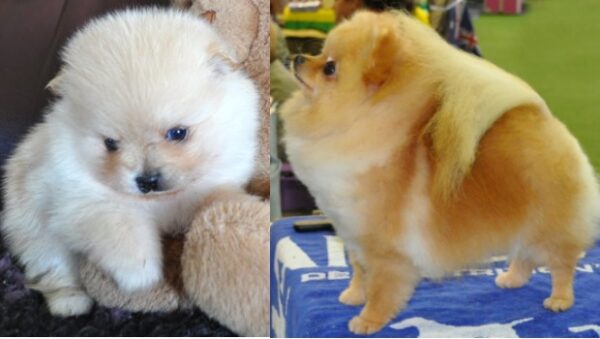
Blacks:
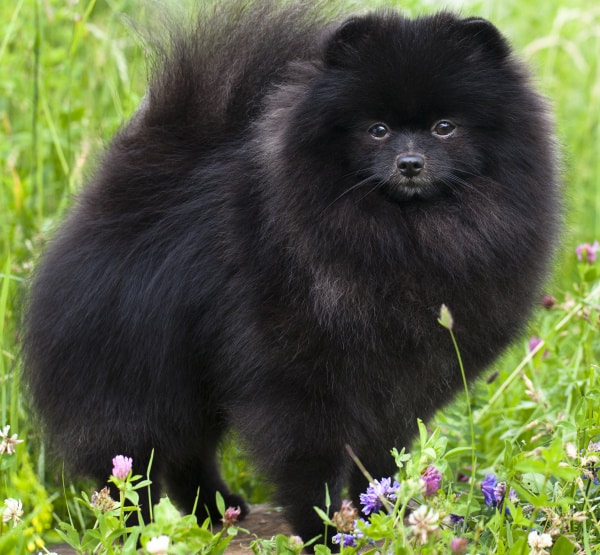
The black coloration in Pomeranian dogs is truly captivating. These adorable creatures possess a stunning black undercoat, complemented by their lustrous black guard hair. Every aspect of their appearance is centered around the beautiful shade of black, from their expressive eyes to their tiny paws.
To maintain the rich black color of their coat, it is essential to take certain precautions. Black Pomeranians are more susceptible to developing a reddish tinge on their fur if exposed to direct sunlight for prolonged periods.
This phenomenon, known as “sunburning,” can cause the black fur to appear slightly reddish or faded. Therefore, protecting them from excessive sun exposure is crucial by providing shade or using dog-safe sunscreen specifically formulated to protect their coat from UV rays.
Despite their elegant black coat, it is not uncommon for black Pomeranians to have a few white hairs interspersed within their fur. These white hairs usually appear on the chest or between the pads of their paws, adding a touch of uniqueness to their overall appearance.
These contrasting white hairs create a charming contrast against their deep black coat’s backdrop, making each Pomeranian even more special.
For complete details and photos of black Pomeranians, visit this great article on the black Pomeranian dog.
Cream:
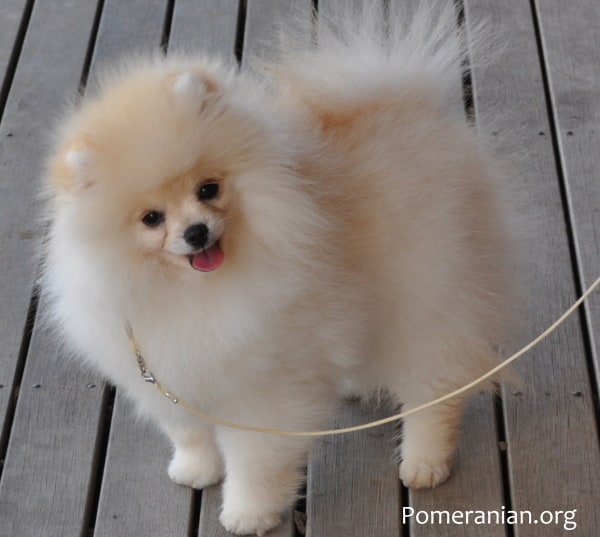
Cream Pomeranians are a sight to behold with their delicate and enchanting coloration. These adorable dogs have beautiful coats of extremely pale orange shade resembling a creamy hue, and this unique colour sets them apart and adds to their overall charm.
One notable characteristic of cream Pomeranians is their self-coloured coat, which means they should be uniform throughout without any white breechings. This uniformity gives them a sleek and refined appearance. While their overall coat colour is pale, the texture of their guard hairs can sometimes give the illusion of a slightly darker shade, adding depth and dimension to their beautiful coat.
To accentuate their elegant appearance, cream Pomeranians must possess certain key features. These include black eye rims, noses, lips, and pads. These dark pigmented areas serve as a striking contrast against their cream-coloured fur, enhancing their facial expressions and giving them a distinct and captivating look. As puppies, cream Pomeranians are typically born white and gradually develop their cream coloration as they grow older.
Cream Pomeranians are a testament to the diverse colours of the Pomeranian breed. Their soft pale orange coat and dark pigmentation in specific areas create a visual masterpiece.
Beaver:
Beaver Pomeranians possess a distinctive coat color reminiscent of the magnificent beaver itself. These adorable dogs have a dark silvery grey hue when born, showcasing their natural beauty. As they mature, their coloration can range from a light biscuit shade to a deeper brownish-grey, all with a captivating silvery blue cast that adds an extra touch of allure to their coat.
One distinguishing feature of beaver Pomeranians is the requirement for self-colored points. This means that their points, including their eye rims, noses, lips, and paw pads, should match the color of their overall coat. This consistency in colouration creates a harmonious and balanced appearance, highlighting the unique characteristics of the beaver Pomeranian.
In addition to their gorgeous coat, beaver Pomeranians have a distinctive eye color. True beaver Pomeranians typically have hazel eyes, adding to their charm and individuality. Their eyes’ warm and captivating hues perfectly complement their overall colouration, creating a mesmerizing combination that will captivate anyone who gazes into their gaze.
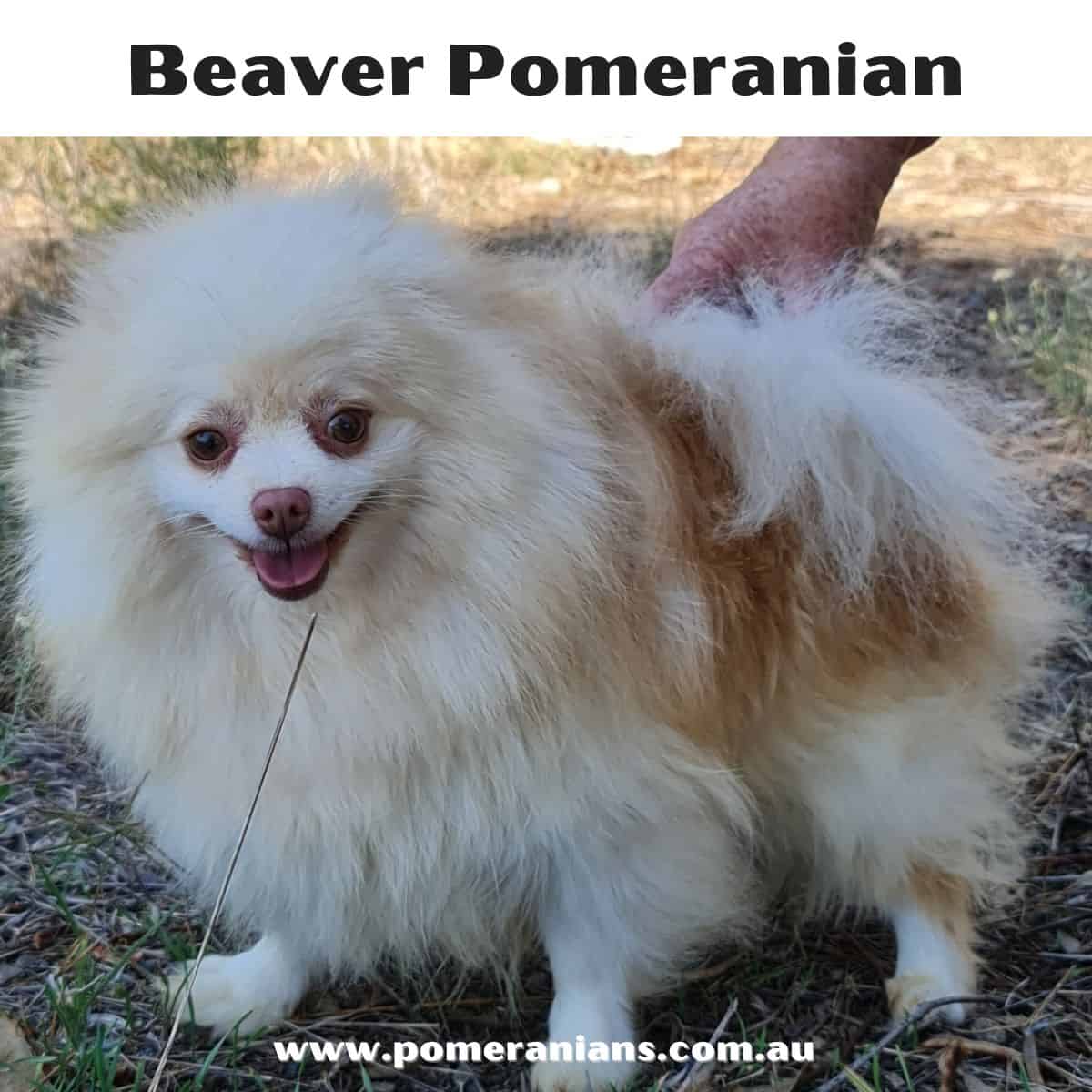
Chocolate:
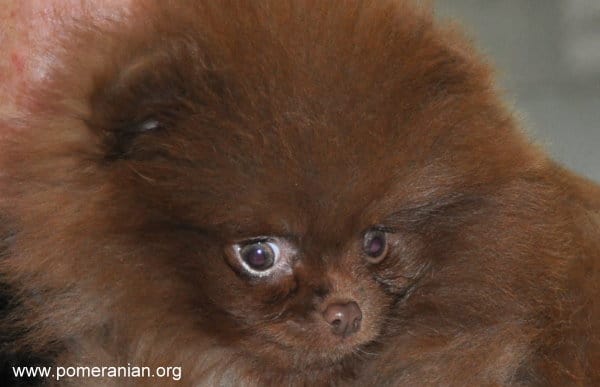
The brown colour variation in Pomeranian dogs is commonly called “chocolate.” When it comes to Chocolate Pomeranians, their coat boasts a rich and luxurious brown hue. The depth and intensity of the brown colour make these dogs truly captivating and visually stunning.
One notable characteristic of Chocolate Pomeranians is their self-coloured points, and this means that their eye rims, noses, lips, and paw pads will match the brown color of their overall coat. This consistency in coloration adds to these charming dogs’ overall elegance and harmonious appearance.
Another striking feature of Chocolate Pomeranians is their hazel eyes. The warm and captivating tones of hazel eyes beautifully complement their rich brown coat, further enhancing their charming and irresistible allure. Combining self-coloured points and hazel eyes creates a stunning, cohesive look.
Blue:
Blue Pomeranians possess a fascinating coat color that is a dilution of the traditional black. These enchanting dogs showcase a stunning blue hue, which sets them apart from other Pomeranian color variations. The dilution process creates a unique and captivating, elegant, and eye-catching shade.
One distinctive feature of Blue Pomeranians is their blue points. Points refer to the coloration of their eye rims, noses, lips, and paw pads. In the case of Blue Pomeranians, these points should also exhibit a blue color, maintaining the overall harmony and consistency of their appearance.
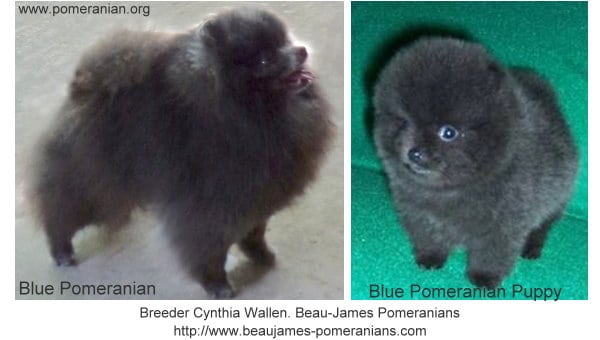
White:
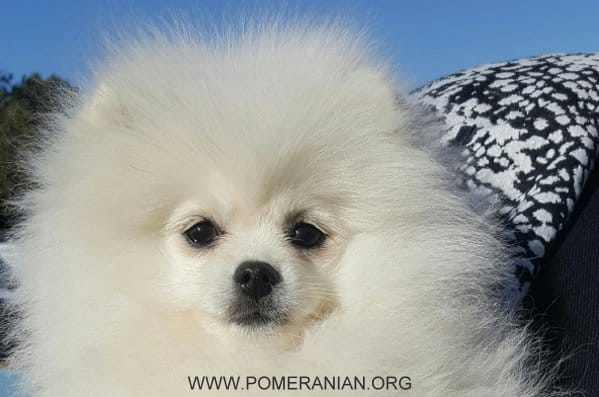
A Pomeranian with a white coat is expected to have a solid, pure white coloration without any hints of lemon or cream shadings. Both the guard hairs and the undercoat should maintain a pristine white appearance. In addition to the white coat, a true white Pomeranian must possess black eye rims, nose, lips, and pads, creating a striking contrast against the white fur.
When born, white Pomeranians exhibit an ice-white coat with pink points. As they grow and develop, these points should naturally darken to black by six weeks while the coat remains pristine ice white.
This transformation is a distinguishing characteristic of true white Pomeranians, ensuring their coat maintains its pure white shade.
It is important to note that young Pomeranian puppies with cream or light orange coats are often incorrectly described as white.
Patterns
Sable:
Sable is a pattern marked by black banding on the guard hairs rather than a distinct color. This pattern gives the dog a shaded or sable appearance, characterized by black guard hairs that may vary in distribution—from just a few on the back or tail to heavy sabling covering much of the dog, sometimes giving it an almost black & tan look. The pattern and intensity of the sable can differ widely. However, it consistently features black pigmentation without patches of solid color, influenced by other recessive genes that can affect the shading of the black pigment.
Shaded sables are a mesmerizing variation of Pomeranian coats, characterized by their multi-colored shading throughout. These coats showcase a captivating blend of three or more colors, creating a beautiful tapestry of hues that sets them apart from other color variations. The key to achieving the desired shaded sable look is to ensure that the shading is as consistent as possible, with no areas of self-color.
Orange Sable:
The base colour of orange sable Pomeranians is typically a rich orange tone that forms the foundation of their coat. This vibrant orange hue is the backdrop for the striking black tipping on their guard hairs. The black tips create a beautiful contrast against the orange, enhancing the visual appeal of the coat and adding a touch of sophistication.
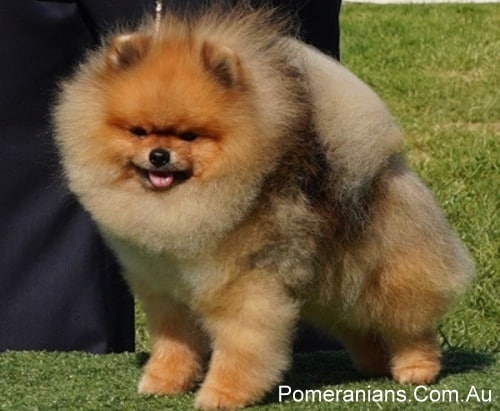
Red Sable
Red sable Pomeranians possess a base color reminiscent of an Irish Setter’s reddish hue, beautifully enhanced by black-tipped hairs. This color, enriched with black sabling (guard hairs), exhibits shades that transition to dark tips, giving each sable dog a distinct and captivating appearance. The inclusion of striking black points further accentuates these red Poms’ deep, rich tones, making their beautiful coloration a standout feature.
Cream Sables:
Cream-sable Pomeranians possess a unique coat color that undergoes a fascinating transformation as they grow. These adorable puppies exhibit a dark grey color when born, gradually fading over time. When they reach about eight months of age, their coat transitions into a creamy hue, complemented by distinctive black tipping on their guard hairs. This evolution from grey to cream with black tipping adds to the allure and charm of cream-sable Pomeranians.
It’s important to note that distinguishing between a cream sable and a wolf sable can sometimes be confusing due to the similarities in their appearance. However, there is a crucial distinction between the two.
A cream sable may have cream and pale orange tones in the undercoat, and this differentiation is vital in identifying and appreciating the distinct beauty of cream-sable Pomeranians. Adding black tipping on the guard hairs adds a touch of contrast and depth.
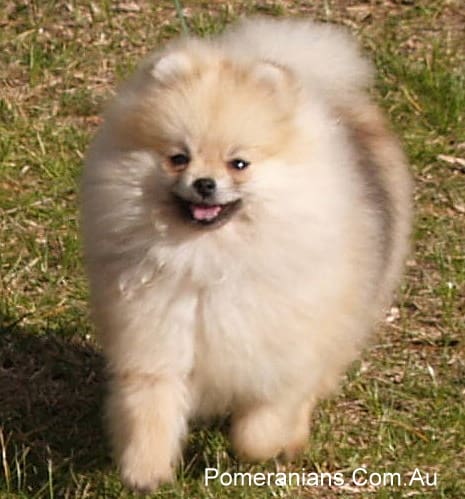
Wolf Sable:
A wolf sable Pomeranian is characterized by its distinctive coat color, which combines shades of grey and black. These dogs exhibit a grey undercoat accompanied by guard hairs, a grey base, and black tipping. The colour variation within the grey spectrum can range from silvery off-white to light grey, adding depth and dimension to their coat.
One important aspect of wolf sable Pomeranians is the absence of any hint of orange in their coat. This distinguishes them from other colour variations, as their coat remains predominantly grey without orange tones. It is crucial to ensure that the wolf sable coat maintains its distinct grey colouration to preserve the breed standard and the unique appeal of these dogs.
It is worth noting that beginner breeders may occasionally mistake other colour variations, such as orange sable, for wolf sable. At six weeks, orange sable puppies may appear greyer rather than displaying a strong orange hue. However, as they mature, the orange colour gradually becomes more prominent.
Experienced breeders know this and know to observe the hair behind the puppy’s ears as a reasonably accurate guide to the adult coat colour. This behind-the-ear check helps identify the true colour potential of the Pomeranian puppy, ensuring accurate registration and breeding practices.
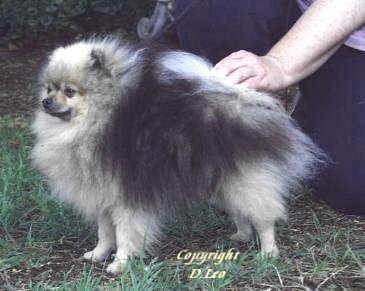
Chocolate & Blue Sables:
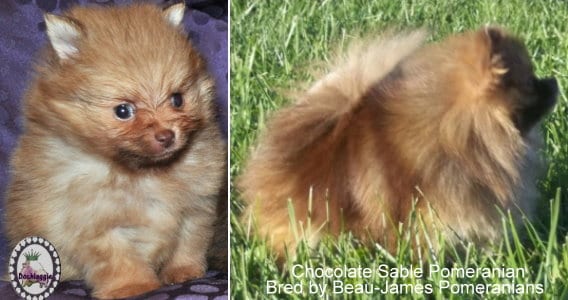
Chocolate Sable Pomeranians exhibit a beautiful and rich chocolate base coat accompanied by darker chocolate guard hairs.
Blue Sables, however, showcases a captivating coat color that starts with a blue base. The base coat consists of shades of blue, ranging from light to dark, and dark blue guard hairs complement it, creating a harmonious blend. Blue Sables feature black tipping at the ends of the guard hairs, intensifying the visual impact of their coat pattern.
Parti colour:
A Pomeranian with a white base color coat with patches of another colour distributed throughout is called a parti-colour Pomeranian. In parti-colour Pomeranians, the white patches can appear in various patterns and sizes, creating a unique and eye-catching coat. Parti-colour Pomeranians should have a white blaze on their head, which adds to their distinctive appearance.
The distribution of color patches on a parti-colour Pomeranian’s coat can vary from dog to dog. Some may have larger patches that cover a significant portion of their body, while others may have smaller, more scattered patches. This diversity in the distribution of colors contributes to the individuality and charm of each parti-color Pomeranian.
While the white color serves as the base for parti-colour Pomeranians, the patches of another colour can range from shades of black, brown, orange, or any other recognized Pomeranian colour. The juxtaposition of the white and colored patches creates a visually striking and unique coat pattern that separates parti-colour Pomeranians.
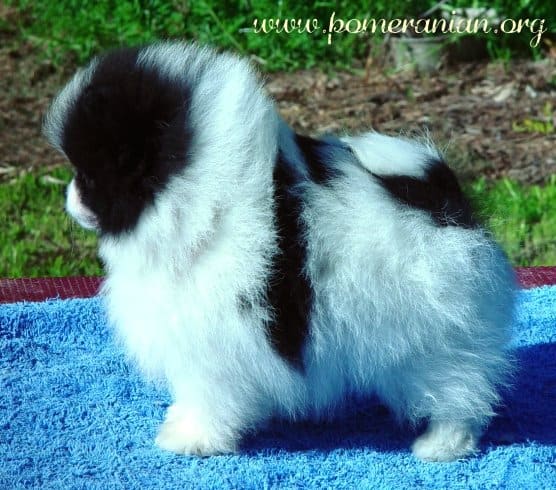
Other Pomeranian Colors
Merle:
Merle is NOT an approved Pomeranian colour pattern here in Australia.
Black and Tan Pomeranians:
This article has not addressed the contentious issue of the black and tan Pomeranian. Black and tans are one of the original breed colour patterns, and from my research, I can see that this pattern was removed from the standard around the 1950s.
For complete details of Pomeranian colours go to the Pomeranian Headquarters website. Still, please note Australia and many other countries do not allow many of the Pomeranian colours approved by the American Kennel Club. Allowed AKC Pomeranian colours include many other colours and patterns.
Conclusion
In conclusion, Pomeranians come in various colours, so there’s something for everyone! Whether you’re looking for classic Orange sable coats or exotic shades like parti-coloured whites and blues, these little dogs have something to offer everyone.
While we can help you select a colour that matches your personality, remember that your Pomeranian’s health is also essential. Be sure to adopt from a responsible breeder and have regular vet checks as part of your pup’s care routine.
With love, discipline, and exercise, Pomeranians will be the ultimate companions you’ll love and cherish forever. So treat yourself to these cute fur balls by exploring their varied coat colours!
Copyright Pomeranians Australia©. All Rights Reserved.
References and Further Reading:
[1] Denise Leo: The Pomeranian Handbook.
[2] Pomeranian Headquarters.
[3] Reputable Pomeranian Breeders Australia.
[4] Dochlaggie Pomeranian Australia.
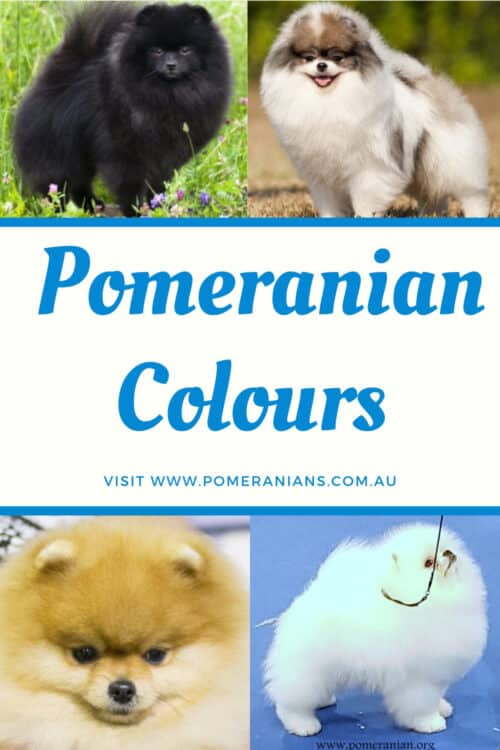
The Pomeranian Handbook
( Printed and shipped in Australia).

